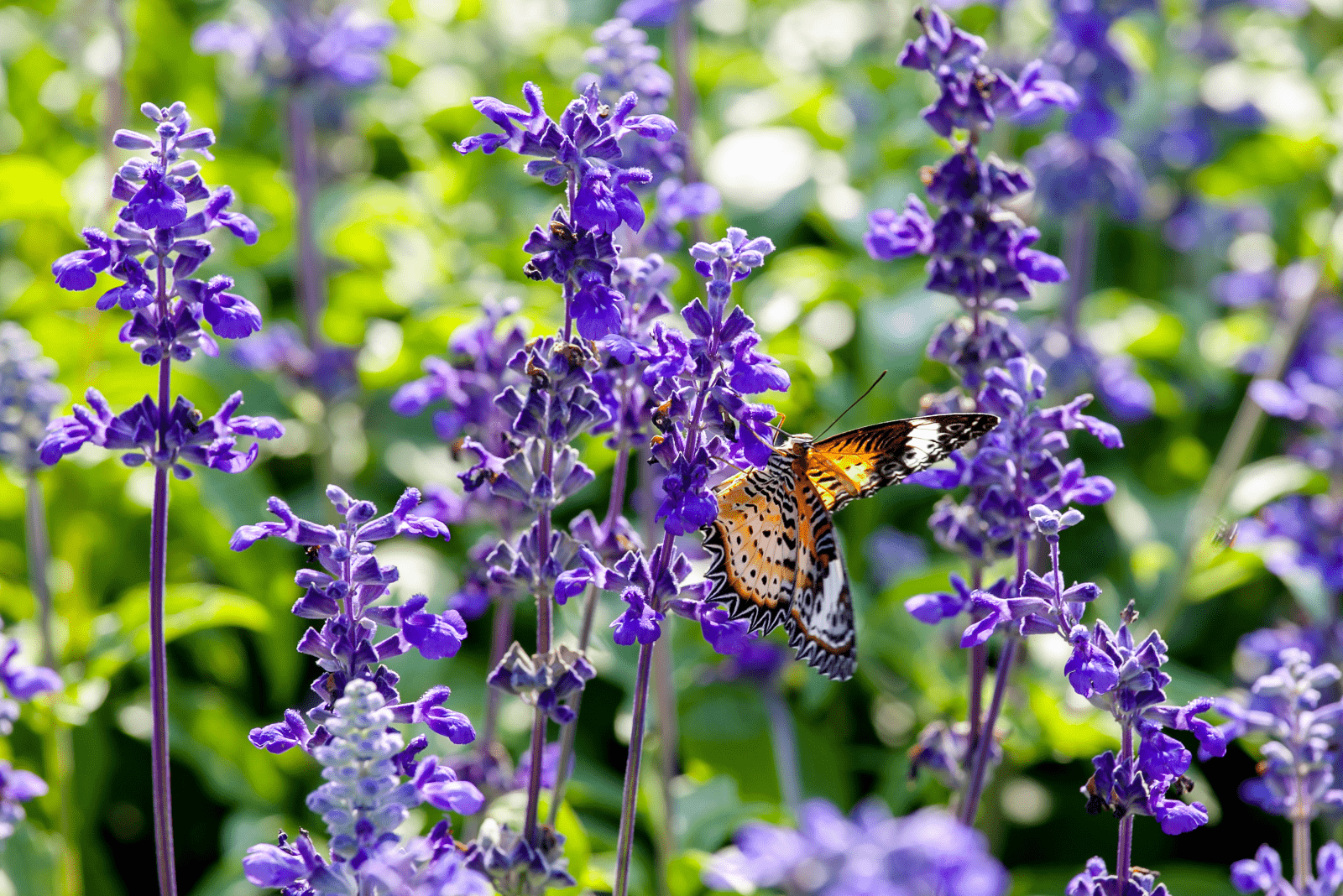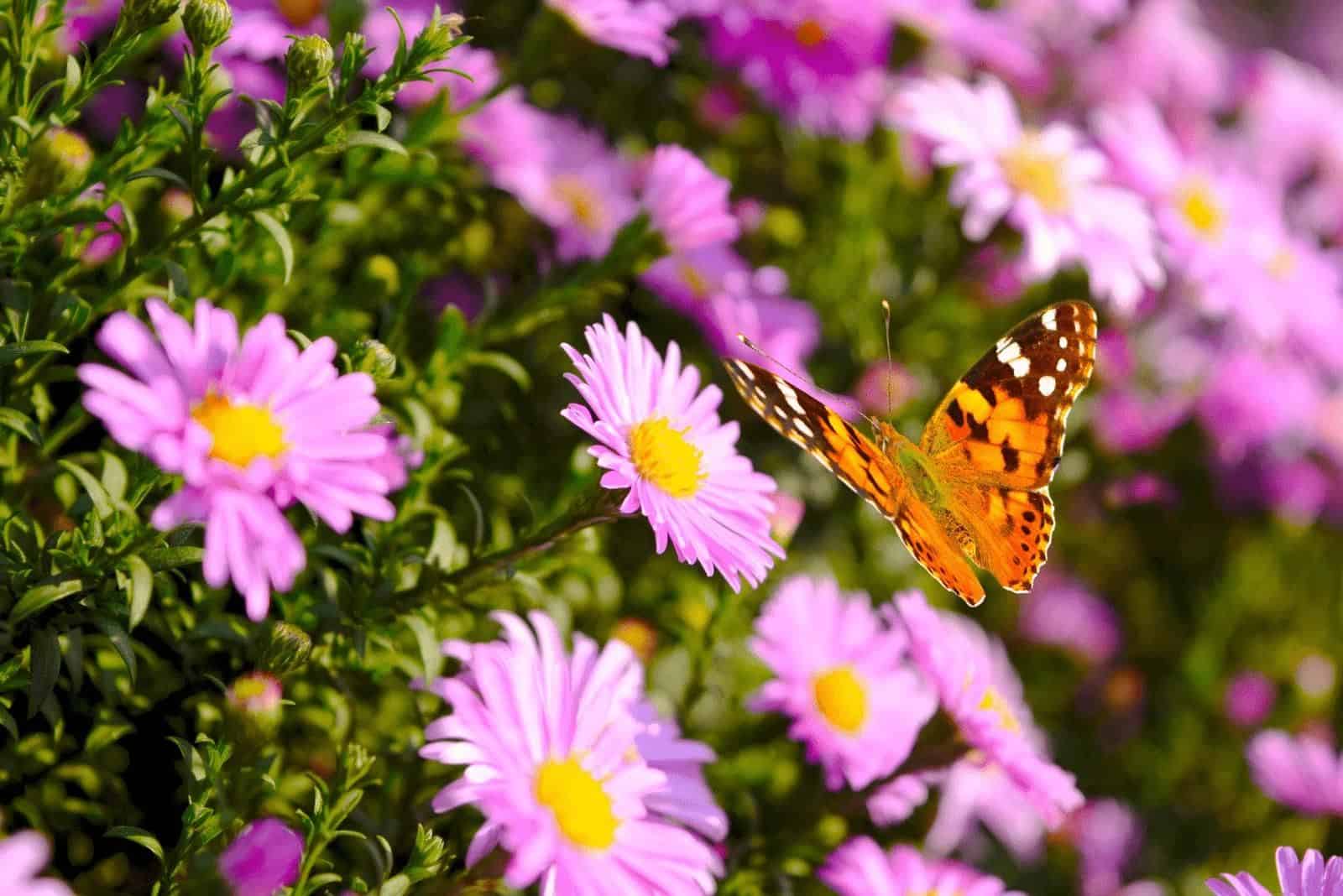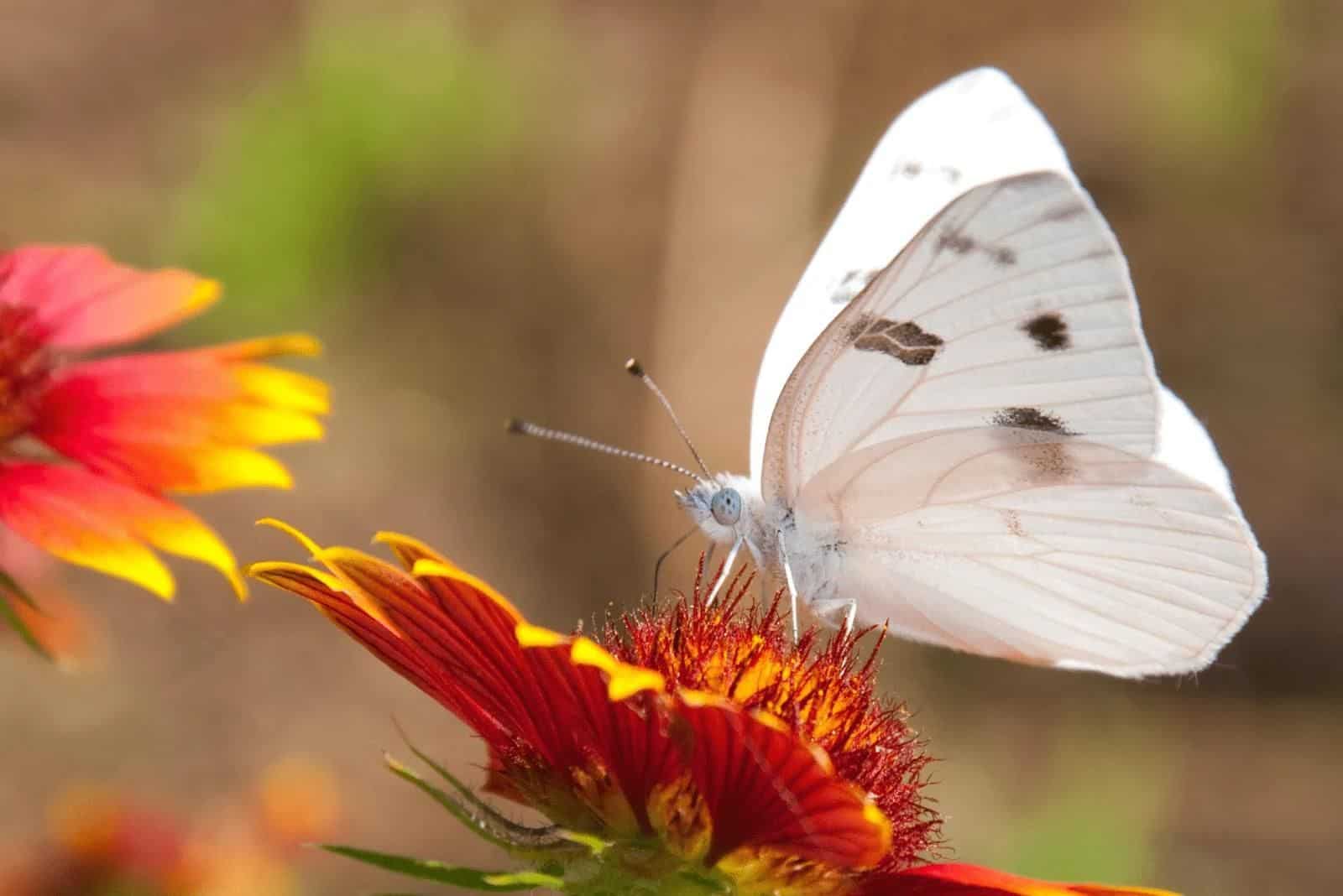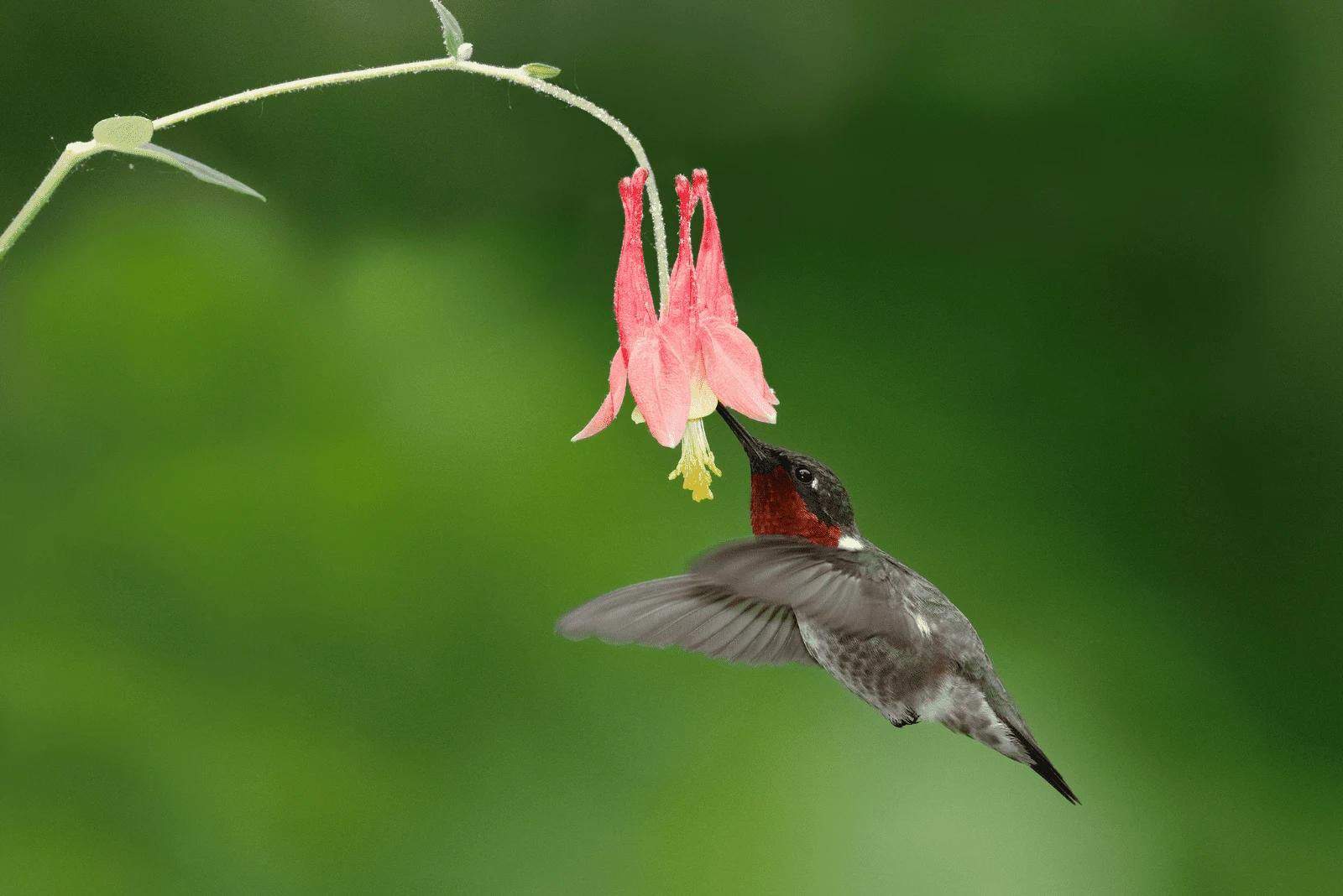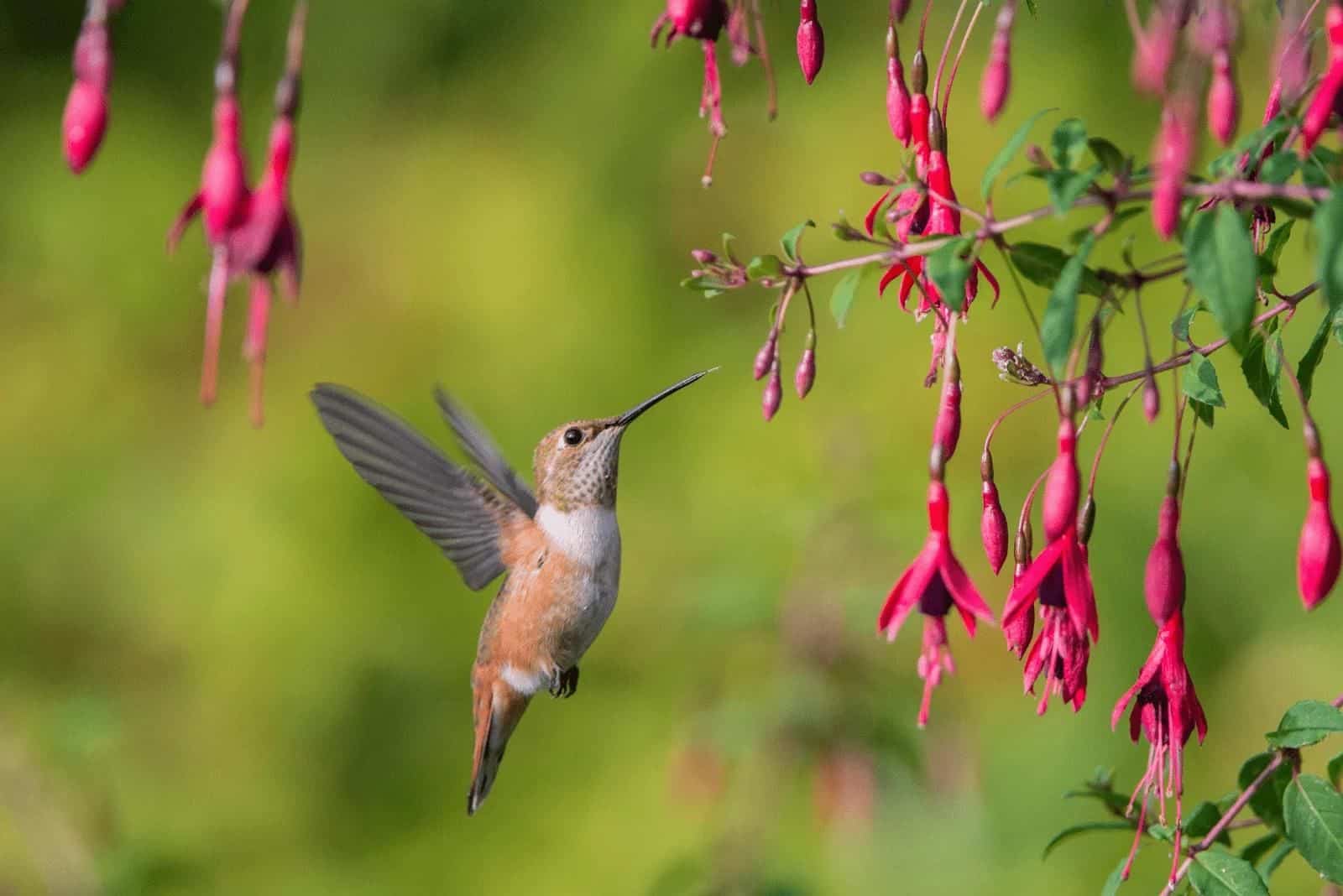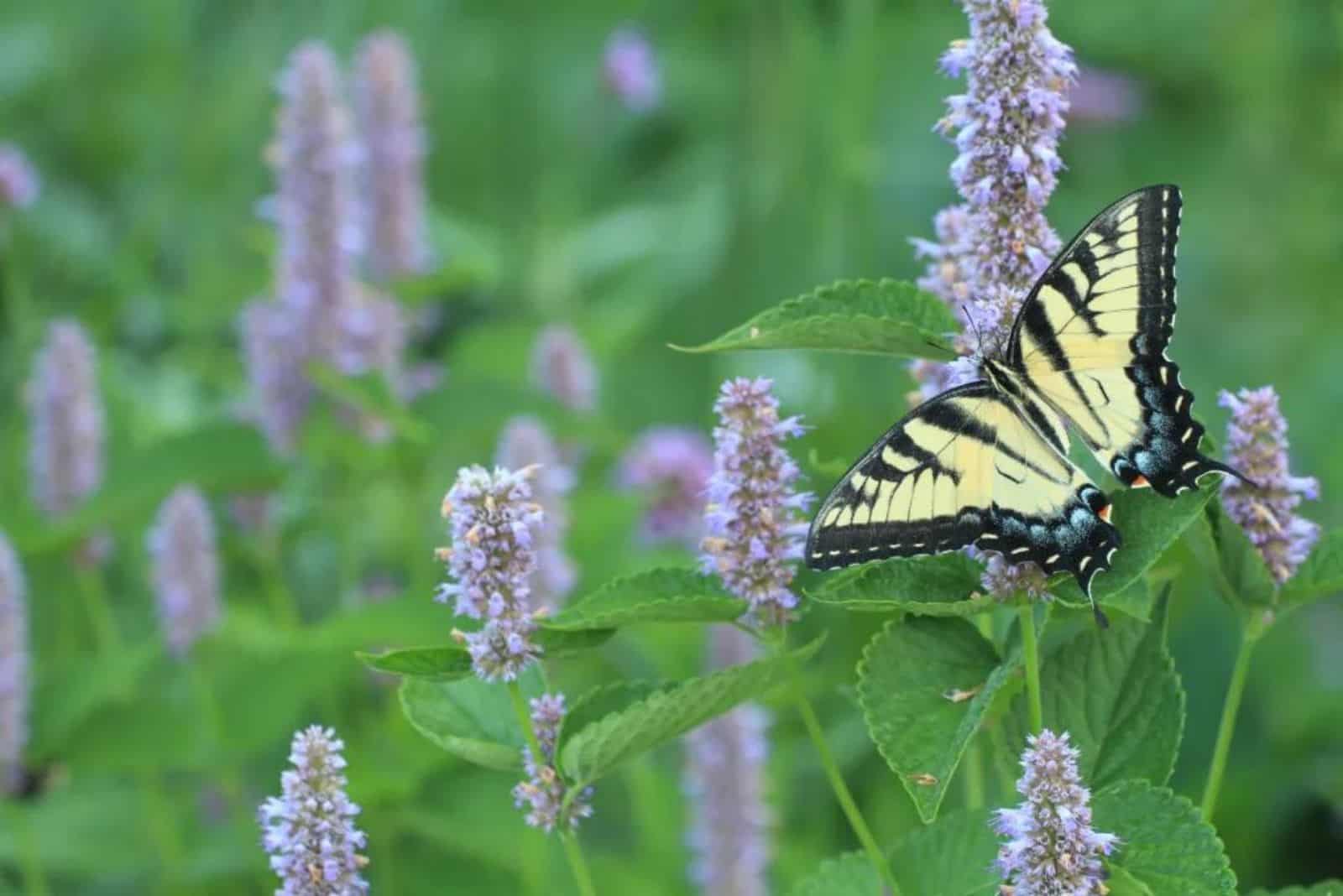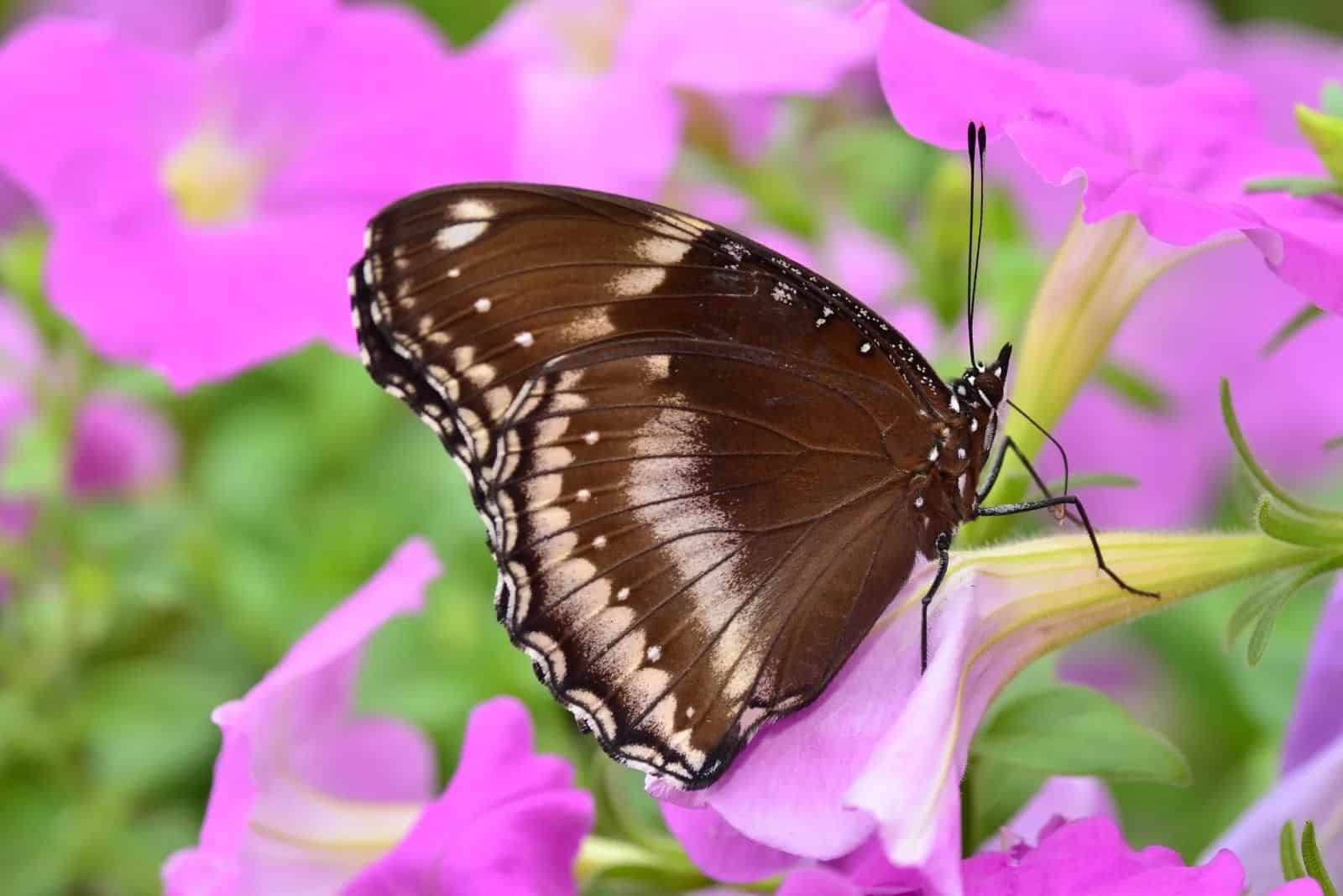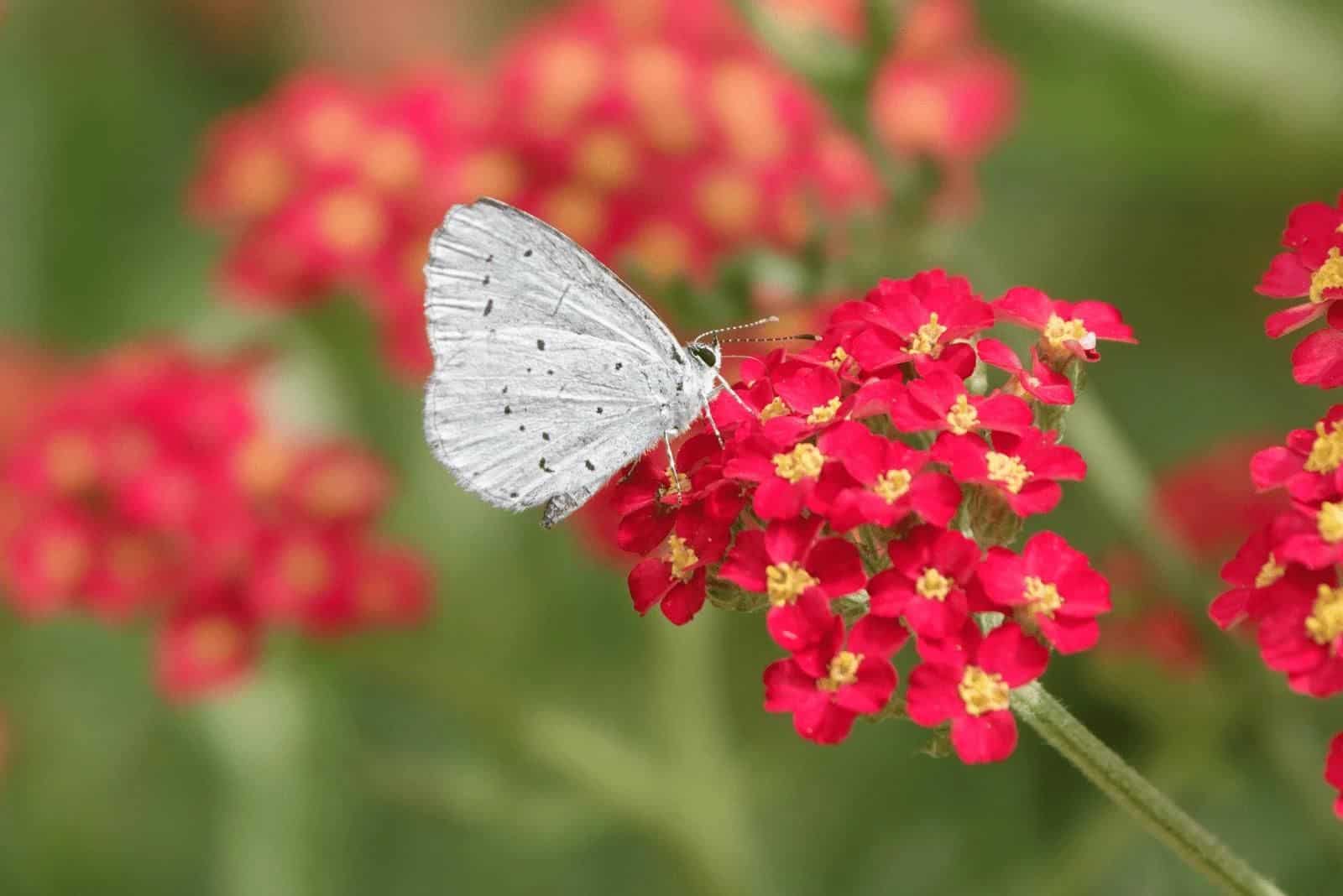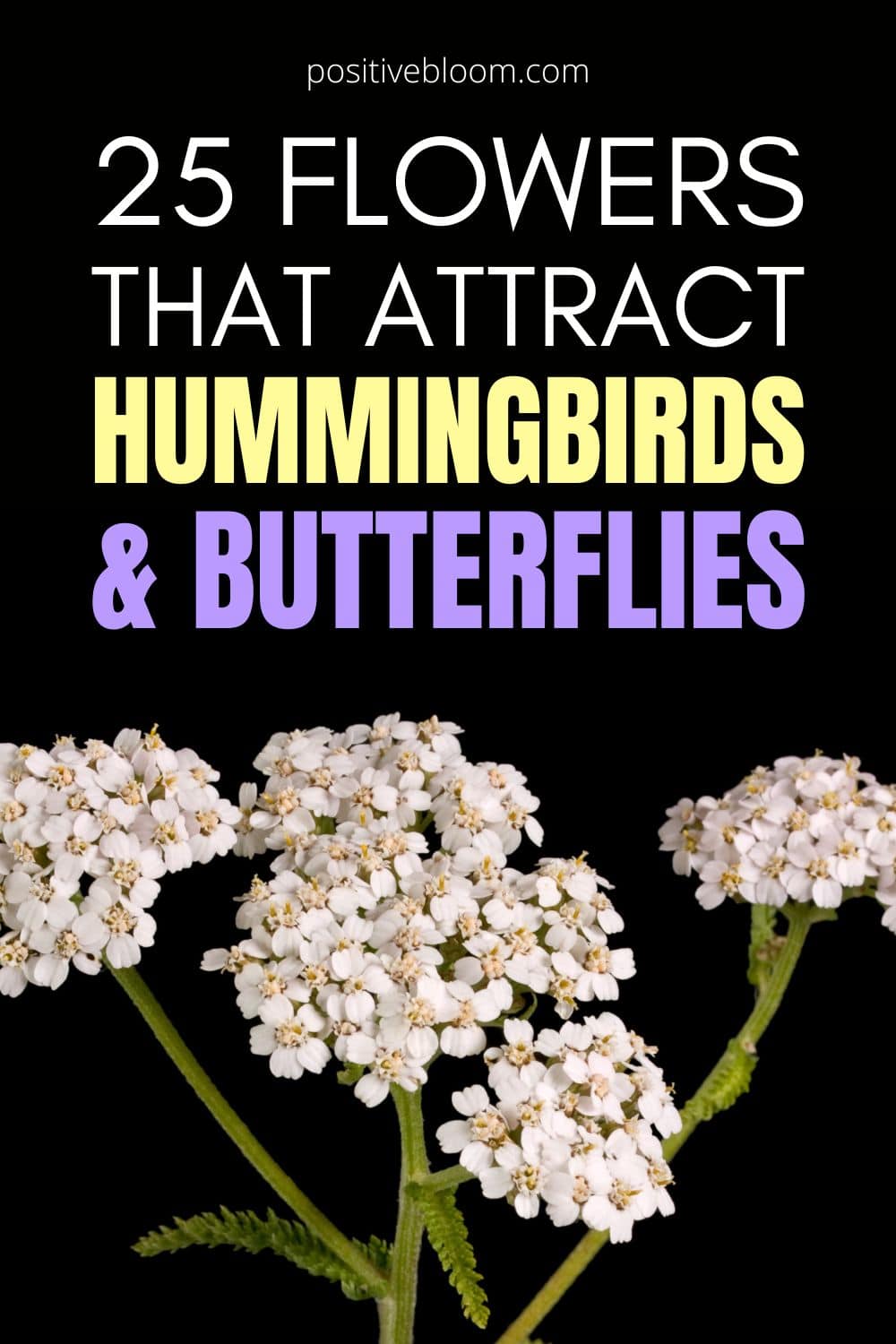Creating a pollinator garden is the best way to go if you want to attract beneficial insects and wildlife, such as bees, hummingbirds, butterflies, bumblebees, etc., to your garden.
There are many flowers that attract hummingbirds and butterflies, and this article includes the most popular ones.
We’ll also briefly discuss some other ways of attracting these pollinators, so let’s not waste precious time and dive right into the colorful world of flowers!
Perennial And Annual Flowers That Attract Hummingbirds And Butterflies
A colorful garden is a sight for sore eyes, and it can also attract many pollinators that keep it alive.
Below, you can read about 25 popular flowers that attract hummingbirds and butterflies and learn more about their basic requirements.
1. Aster
These perennial plants bloom in late summer or early fall, and their nectar-rich white, pink, purple, and blue blossoms attract hummingbirds and butterflies.
It thrives in USDA zones 3-8 and needs full sun and a well-draining growing medium for optimal growth.
2. Bee Balm
Bee balm, also called Monarda didyma, starts flowering in July and continues late into the summer. Its tubular flowers can be white, pink, purple, or red and attract many different pollinators.
It grows in USDA zones 3-9 and thrives in full sun, but it will tolerate part shade in hotter climates. This perennial plant prefers fertile soils with good drainage, and you shouldn’t allow the substrate to be too wet or completely dry.
3. Black-Eyed Susan
This bright yellow, golden, orange, red, or bronze hummingbird magnet blooms from June to September and is home to many different pollinators.
It is usually grown as an annual, but it can be a short-lived perennial in the right conditions. Grow it in USDA zone 3-9, provide it with full sun conditions, fertile and well-draining soil, and water it whenever the topsoil dries out.
4. Blanket Flowers
If you want to attract swallowtail butterflies, planting a gaillardia (blanket flower) is a good way to go.
The blossoms of the daisy-like gaillardia come in red, orange, or yellow shades, and the plant blooms heavily, making it suitable for any garden.
It is hardy in zones 3-10, and as it’s been crossed many times, you’re more than likely to find a cultivar suitable for your climate.
Blanket flowers require full sun for the best growth, and poor, well-drained soils, so you shouldn’t fertilize it too much or amend the soil with organic content.
5. Bleeding Heart
Attracting hummingbirds into your pollinator garden has never been easier! Plant this colorful bleeding heart and enjoy all its benefits!
This hardy perennial thrives in USDA zones 3-9 and grows best in the early morning or late afternoon sun, and in a well-draining, nutrient-rich medium.
6. Butterfly Bush
This deciduous bush can be many different colors; white, pink, purple, blue, yellow, orange, red – you name it! The butterfly bush flowers from mid-summer to early fall and attracts many butterflies and hummers that feed on its nectar.
It is hardy in zones 5-9 and thrives in full sun (although, it will grow in part sun as well). Plant it in a slightly acidic, well-draining growing medium, and you’ll soon enjoy its spike-shaped clusters or starry blossoms.
Finally, the butterfly bush can be invasive, but you can always get a sterile cultivar that won’t suffocate your other plants.
7. Cardinal Flower
You can find the cardinal flower on the list of water plants suitable for ponds, and both you and the hummingbirds can enjoy its red flowers in moist soils.
It blossoms from July to September and thrives in USDA zones 3-9.
The cardinal flower prefers full sun, but can tolerate partial shade in warmer climates as long as the growing medium is moist and fertile.
8. Columbine
This non-woody perennial is native to North America and is characterized by its spur-like flowers. Most varieties bloom in late spring or early summer when they expose their white, pink, red, purple, blue, or yellow flowers.
It is hardy in zones 3-9 and prefers full or part sun, depending on the climate. It flourishes in well-draining and moderately moist growing substrates, but you should avoid boggy mediums.
9. Coral Bells
This plant got its name for a reason; its blossoms resemble coral bells. Its typically red, pink, or white clusters of blooms can also decorate your flower bed.
It produces flowers from late spring to mid-summer and can be grown as a perennial in zones 4-9.
The coral bells plant prefers part shade, but it can grow in sunnier locations as long as you water it more frequently. Finally, plant it in nutrient-rich, well-draining, and slightly acidic soil, and it will thrive.
10. Cosmos
The meaning of the cosmos flower is very powerful and differs in different cultures and religions, but it can attract pollinators all over the world if you give it what it needs and grow it in USDA zones 2-11.
It starts flowering in early summer and continues until frost kills it (if you keep deadheading it). Its open, cup-shaped, white, yellow, orange, red, or maroon flowers are true hummer magnets, so they’re perfect for a pollinator garden.
Cosmos plants flower best in full sun and drier soil, but don’t forget to give it some compost to improve the soil structure.
11. Delphinium
Delphinium flowers are usually blue, but can come in many colors, including white, pink, lavender, red, or yellow.
They flower in early summer and then later in the summer or early fall.
This plant is a perennial in zones 3-7, although some cultivars can survive in zone 8.
Delphinium flourishes in fertile and well-drained soils and needs about 6-8 hours of sunlight each day, preferably early in the morning and late afternoon.
12. Foxglove
Foxglove primarily blooms in early summer, but if you deadhead it you can expect a new batch of flowers later in the season.
Its tubular flowers come in many colors, such as white, pink, purple, yellow, and red, and the insides of the little trumpet heads are speckled with darker shades.
Foxglove thrives in zones 4-9 and can tolerate both full sun and some shade as long as you plant it in a well-draining and moist medium.
13. Fuchsia
Fuchsia flowers are usually purple, pink, or magenta, but some varieties can be red or white. One of the things that most growers love about them is the fact that they start to bloom in May and continue into the fall.
You can grow them in hanging baskets to give your outside garden a novel and unique look, train them on a stake or plant bushy cultivars. They also make perfect balcony privacy plants.
They aren’t very hardy and prefer to be grown in zones 10 and 11 where they can succeed as perennials.
Plant them in a medium with good drainage and moisture retention that you have amended with compost and peat moss. This plant doesn’t like direct sunlight, so keep it in indirect light all day or expose it to direct sun in the morning.
14. Hollyhock
Hollyhock blooms in mid-summer and early fall and adorns your yard with a myriad of white, pink, purple, blue, yellow, red, or black blossoms.
It is hardy in zones 3-8, and prefers full sun and a nutrient-rich, well-draining medium.
15. Honeysuckle
Honeysuckle blossoms are primarily dark pink and golden, but can also be purple, vivid orange, and yellow.
They typically bloom from May to mid-summer, although some cultivars can produce flowers in the fall.
The honeysuckle is hardy in zones 5-9, needs about 6-8 hours of light per day for the best blossoms, and thrives in well-draining soil rich in organic matter.
16. Hyssop
Hyssop is an amazing herb that attracts pollinators and repels pests like cabbage moths.
It produces tall spears of white, pink, purple, and blue blooms in mid-summer to late fall.
Hyssop is hardy in USDA zones 4-9, thrives in full sun, and prefers fertile and loamy, well-draining growing medium.
17. Impatiens
The flowers of this plant come in coral, purple, pink, white, red, yellow, and violet, appear in spring, and last until the frost kills them.
Impatiens are perennials in zones 10-11, but you can grow them as annuals in colder climates if you want to.
Just make sure you plant them in a well-draining medium enriched with humus, and keep them in part sun (you can expose them to direct light early in the morning or late in the afternoon).
18. Lupine
This plant flowers from late spring until the first weeks of July, but you can pair it with some late bloomers, such as coneflowers or zinnias, for a colorful garden all season long.
Lupine primarily produces blue blossoms, but the long, rattlesnake-like inflorescence can be red, yellow, or white.
It is hardy in zones 4-8 and produces the best flowers in full sun and well-draining substrate.
19. Milkweed
Milkweed is also known as butterfly weed, and it is a host plant for Monarch butterflies. These insects lay their eggs on this plant’s leaves or flower heads, which grow into caterpillars and eventually turn into gorgeous butterflies.
The flower head is composed of many tiny blossoms and can be white, pink, purple, yellow, orange, red, or green.
Milkweed flowers from June to August and is a perennial in zones 4-9. It prefers full sun conditions. Most varieties can tolerate garden soil with pH levels from 4.8-6.8, but swamp milkweed requires moist soil.
Finally, milkweed can get invasive, so plant it in a location where you can control it better or create a special garden bed just for this plant.
20. Petunia
There are many different petunia cultivars that come in various shades, from white, yellow, red, pink, or purple to black.
I mean, who wouldn’t want to know everything about growing a black magic petunia?
Petunias usually bloom in summer, but some varieties can bloom from spring to fall. They are suitable for hanging baskets and are considered perennials in USDA zones 9-11.
The plant needs at least 5-6 hours of light each day, but will produce the most flowers in full sun conditions.
Finally, the soil should be moderately fertile, but well-draining.
21. Phlox
Phlox is a fantastic plant whose white, pink, rose, purple, red, orange, or bi-colored blossoms are perfect for flower beds or to be planted at the base of tall trees.
There are many different cultivars; some bloom in mid-summer, while others produce their blossoms later in August.
Phlox is a low-maintenance perennial and is suitable for USDA growing zones 4-8. All it needs is a well-draining growing medium amended with compost and peat moss and full sun conditions. A layer of mulch will protect your Creeping phlox in winter from freezing temperatures.
An upright garden phlox will benefit from some shade during the hottest period of the day.
22. Purple Coneflower
The eastern purple coneflower (referred to as Echinacea purpurea in the botanic world), is a short garden perennial that typically reaches a height between 1/2-2 feet tall.
Its distinctive reddish-purple blossoms appear in June, and the plant keeps flowering until August.
Oh, and the plant is called purple coneflower, but the blooms can sometimes be pink or even white!
It is hardy in USDA zones 4-9, requires at least 6-8 hours of light per day, and thrives in a variety of soils (such as clay, rocky, or sandy mediums) as long as they have good drainage.
23. Salvia
This hummingbird magnet is about 1-2 feet tall and produces white, yellow, green, orange, blue, purple, pink, red, or brown blossoms from late spring to early summer. If you deadhead it, it can flower again in the fall.
It is a hardy perennial and can grow in USDA zones 3-8. Salvia requires excellent drainage and thrives in rocky mediums that aren’t particularly fertile.
Just make sure it gets plenty of light, and it’ll flourish! (Although, some varieties can produce many flowers in part shade.) Inadequate watering can lead to many problems with Salvias.
24. Yarrow
Yarrow cultivars are numerous and come in all colors, from white and soft pastels to vivid gold, yellow, orange, and red.
This perennial flowers from early to late summer and isn’t a victim of deer or rabbit attacks.
Yarrow is hardy in USDA zones 3-9, thrives in various mediums (but prefers well-draining ones), and needs more than six hours of light each day to produce the most flowers.
25. Zinnia
Zinnia is one of the plants with shallow roots, so you can grow it in pots or with other flowers without worrying that it’ll suffocate them.
It starts blossoming in mid-summer and stays in bloom until the frost kills it. Zinnias will adorn your garden with bright yellow, orange, red, pink, purple, or white colors every year.
This plant is an annual, and you can grow it in zones 3-10; just plant it in full sun conditions and a fertile medium with good drainage and plenty of organic matter.
Other Ways To Attract Hummingbirds And Butterflies
Planting flowers that pollinators love is an excellent way to attract hummers and butterflies, but there are some other things you can do to invite them into your garden.
For instance, hummingbirds like hibiscus flowers because of their shape, but that’s not the only thing that attracts these pollinators.
They sip on nectar, and you can invite them in by making your own. Install a small hummingbird feeder and fill it with sugar water (dissolve 1 part sugar in 4 parts water).
You can also put a bird bath in your garden, which will improve your landscape design and provide a relaxing space for hummingbirds.
FAQ
This article discussed some amazing flowers that attract hummingbirds and butterflies, but there are other things you should know if you want to attract more pollinators.
We gathered some of your questions about inviting these beneficial organisms into your garden and will answer them in the sections below.
What is a hummingbird’s favorite flower?
The favorite color of hummingbirds is red, so if you want to attract more of these birds, you can create an all-red garden they won’t be able to resist.
You can also adorn your feeders with red ribbons, streamers, and other red objects to make them more attractive to these birds.
But don’t go overboard and put red dye in the artificial nectar you make for them. The pigment can be toxic for hummingbirds, and instead of inviting them in, you’ll chase them away.
What flowers do hummingbirds not like?
Hummingbirds don’t like flowers that don’t have plenty of nectar, such as sunflowers, tulips, roses, daffodils, marigolds, lilacs, etc.
However, you can always grow plants rich in nectar and throw in other varieties that aren’t that sweet to create a balanced, awe-inspiring, and practical garden.
Final Thoughts
We discussed many flowers that attract hummingbirds and butterflies, such as zinnias, bee balms, cardinal flowers, coneflowers, impatiens, salvias, etc.
All of them are rich in nectar and perfect for a garden! However, if you want to take it to another level, you can get creative with inviting these pollinators by installing hummingbird feeders and bird baths.We hope you fill your garden with these pollinators, and until next time!
Like this post? Share or pin it for later!

